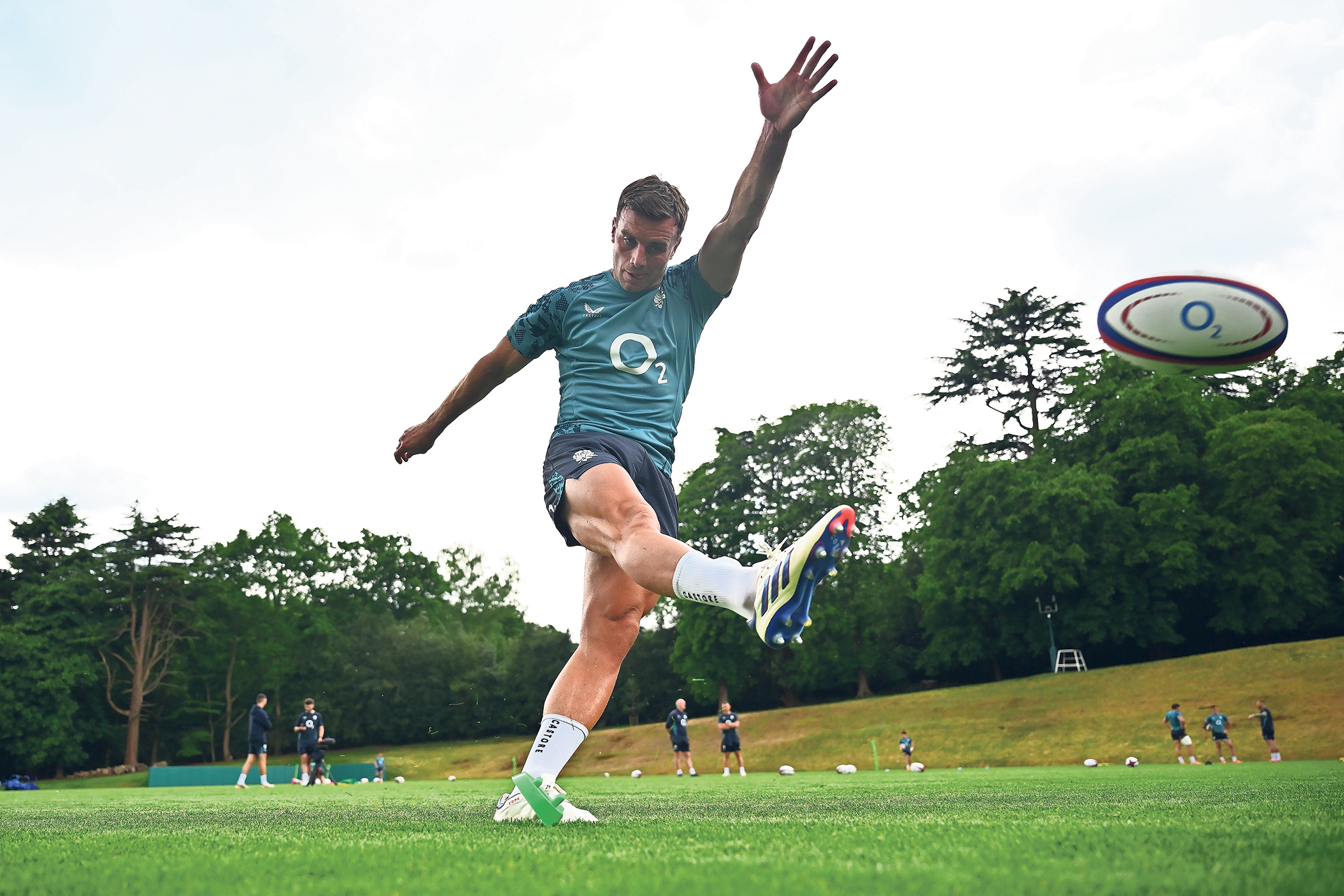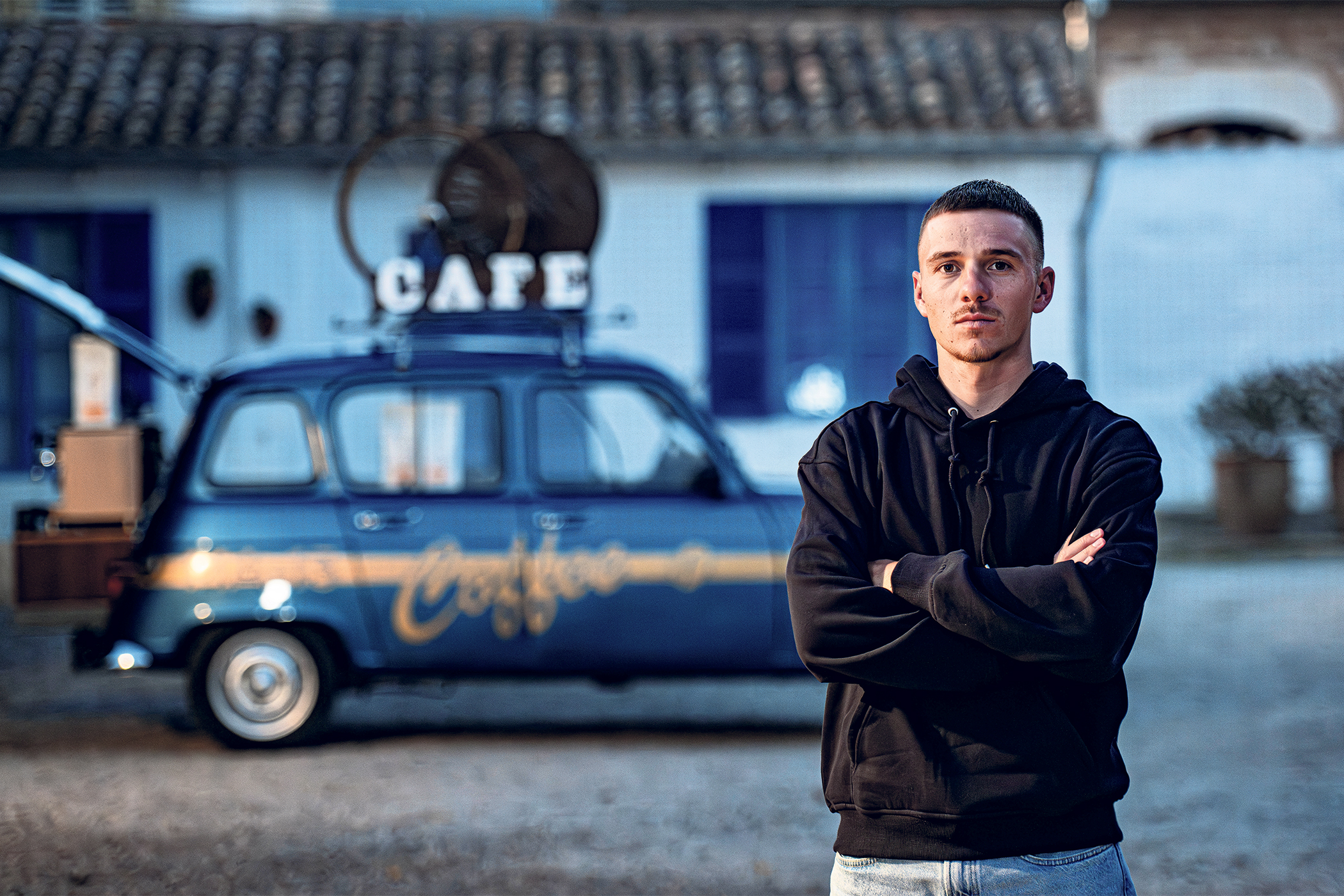George Ford is sitting bolt upright in a fancy Pennyhill Park hotel armchair demonstrating his drop-goal routine; swivelling his body, using some curtains down the hall as imaginary goalposts, eyes fixed on me relaying each step as if my next task is to stroll over to the training field and have a go. No one needs to see that, but Ford is convincing enough that I imagine I could give it a go.
For those who have not seen Ford hit a drop goal, he is highly effective. When England went into the last men’s Rugby World Cup under pressure, Ford banged over three in the first half to give them breathing room in their must-win opener against Argentina. Fittingly, his 100th England cap this summer was also marked with a drop goal.
Two recent efforts for Sale, in the wind and rain at Bath, had everyone purring. They also fit neatly into the two categories of drop goal Ford is now discussing.
Let’s call one group “the gifts”. A quick bit of context: back in 2022 a new law was introduced that meant if an attacking team were held up over the try line, the defensive team would be given a goal-line dropout (a kick from behind their own line).
Given the kicking team’s players then have to chase after the ball from a standing start, the receiving team have plenty of time to plan their next move. Or in Ford’s case against Bath, to handle a slippery ball before setting himself just inside the opposition’s half and banging over a long-range drop goal. “If they kick it straight to you and you have all the time in the world…” he tails off, smiling.
Related articles:
We are used to seeing the pre-planned drop goal routine; the forwards trudging through phases when “you don’t feel like you have momentum”, or in “shitty weather”, before a fly-half drops back deep in the pocket to avoid a chargedown. Ford likes those less. His preferred type, better than the gifts, are the ones that no one sees coming. “The best time to take one is when the opposition least expects it. You try to be a step ahead,” he says. “We speak a lot about drop goal routines – do we need a set play off a lineout? – and I always say no, because as soon as you start setting it up, the opposition can read it.”
Ford has a clear process, honed through working with Dave Alred, the legendary kicking coach, and Jonny Wilkinson, now a kicking consultant with England who you may also remember for a certain strike off his right foot back in 2003.
Ford will make the decision to go for a drop goal during the previous phase. The mental prep then begins. Body shape is “enormous”, with Ford always using the same trigger, getting his body side-on to the ball rather than front-on facing the posts (or curtains, in our demonstration). Getting into that position as quickly as possible allows more time for the kick itself. Delay too long and up goes the pressure. Reiterating that element of surprise, it becomes harder to rush a drop goal if you do not see it coming.
“He was the best [at them],” Ford says of Wilkinson, whose golden 2003 moment overshadows his brilliance at the 2007 tournament four years later. Ford’s father, Mike, was then England’s defence coach, meaning a 14-year-old George attended the matches and saw Wilkinson’s craft up close.
“Do you remember the France semi-final [in 2007]? Unbelievable kicks. Off both feet. I’m thinking, ‘There is no way.’ They won because of his kicking. He never used to really sit in the pocket, giving it away. He would get the ball and then all of a sudden step back, bang. Obviously thinking so far ahead.”
If you have the mindset and the hunger, your game is just going to get better and better
George Ford
It is almost a year since another of Ford’s famous drop goal attempts. Except this time he missed, with the final play of the game as England lost 24-22 to New Zealand.
When you hear Ford discuss his preference for a strike out of nowhere and then rewatch that miss, it seems obvious why it never worked. Ford sitting deep back in the pocket alerts the defence. He is not quite side on. The pass is a little high. More time is spent getting into position than on the strike itself, which he has to snap with five All Blacks going for a chargedown. “I don’t think George Ford has ever missed a drop kick in his life,” the All Blacks head coach Scott Robertson said sincerely.
It says a lot about Ford’s value to England, and the form he has been in over the past year, that the moment has faded into obscurity. Right now, in a three-way battle for the England No 10 shirt with Fin and Marcus Smith, Ford is in the form of his life.
“I feel really good, I’m excited about playing. I absolutely love training. If you have that mindset and that hunger, then your game is just going to get better and better,” he says. “You come into England camp, get out on the training field and think: ‘Where else would I rather be right now other than here?’”
At 32, the Ford we are seeing now is the accumulation of thousands of hours tweaking and grafting away at his game. It would be staggering if, when the time to embrace retiring from playing comes, he does not move into coaching.
“There are so many different ways of winning a game and that can change in a game as well, how quickly you can do that if something is not working, how you can influence that as a coach.
“The best coaches I’ve had are when I’ve been on the field, a message will come on and I think, ‘That is fucking gold for us.’ It is so helpful.”
There is no doubt that future players working under Ford will have the same feeling.
Photograph by Dan Mullan/Getty Images


